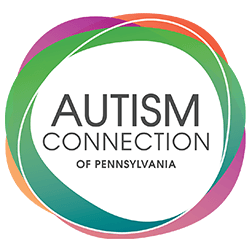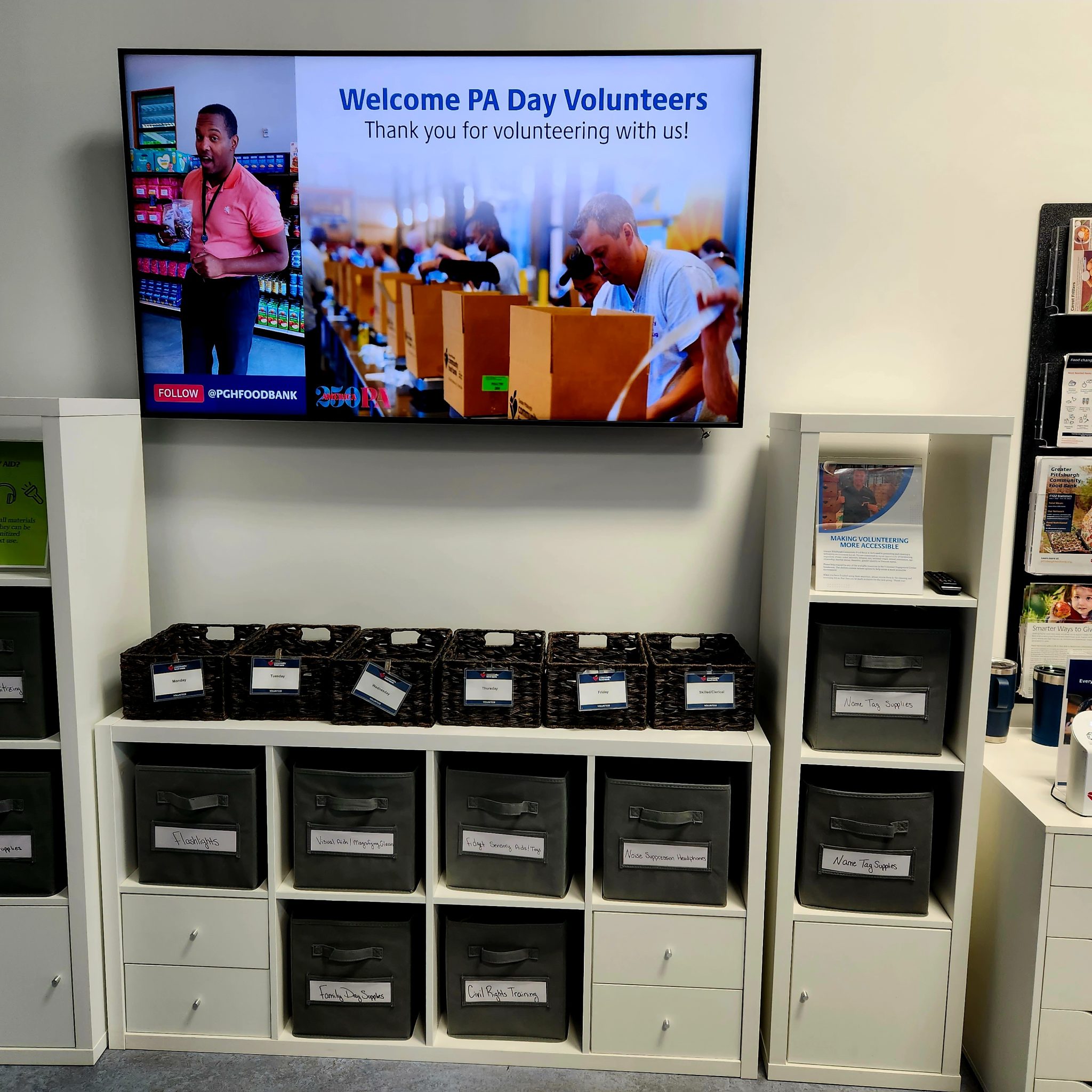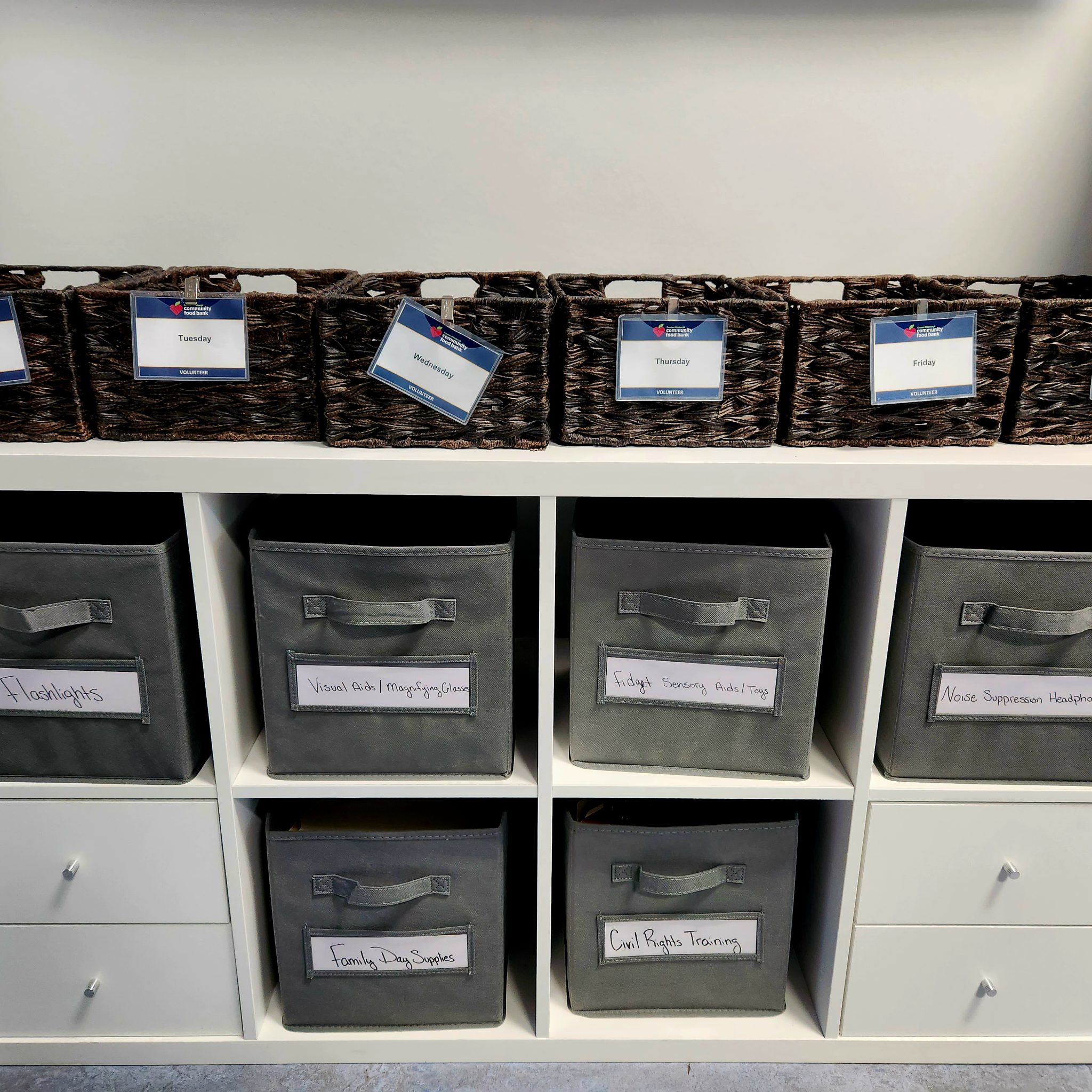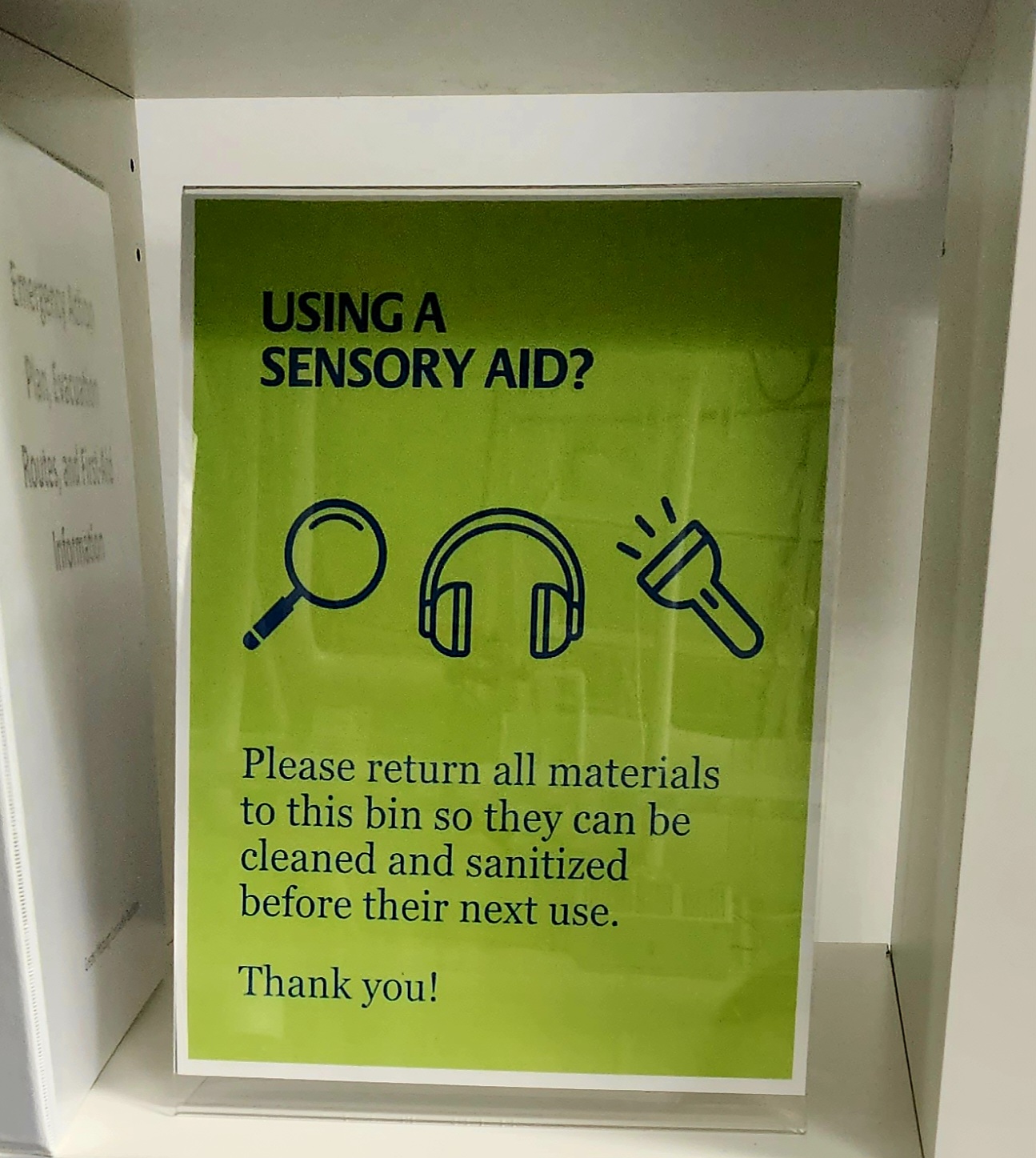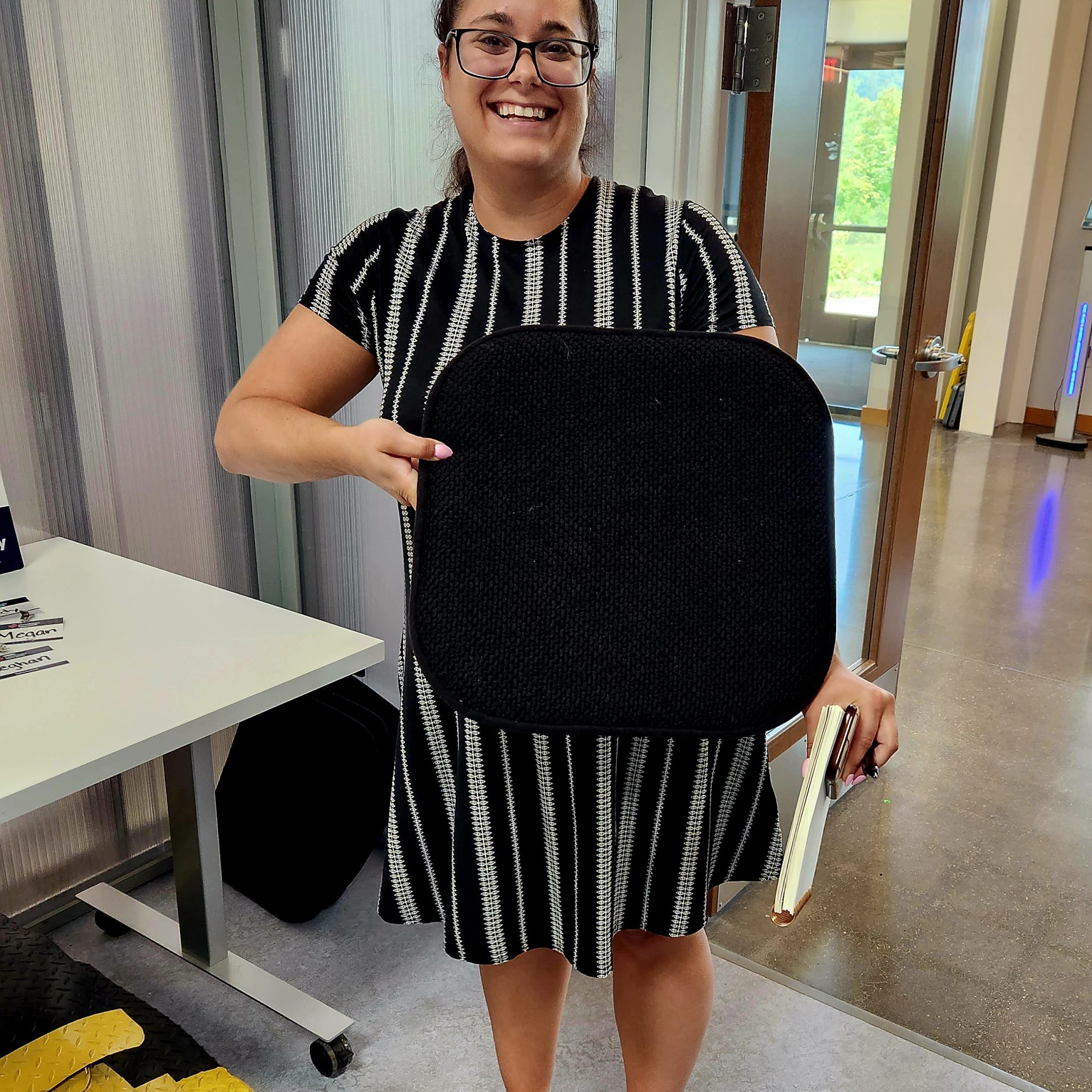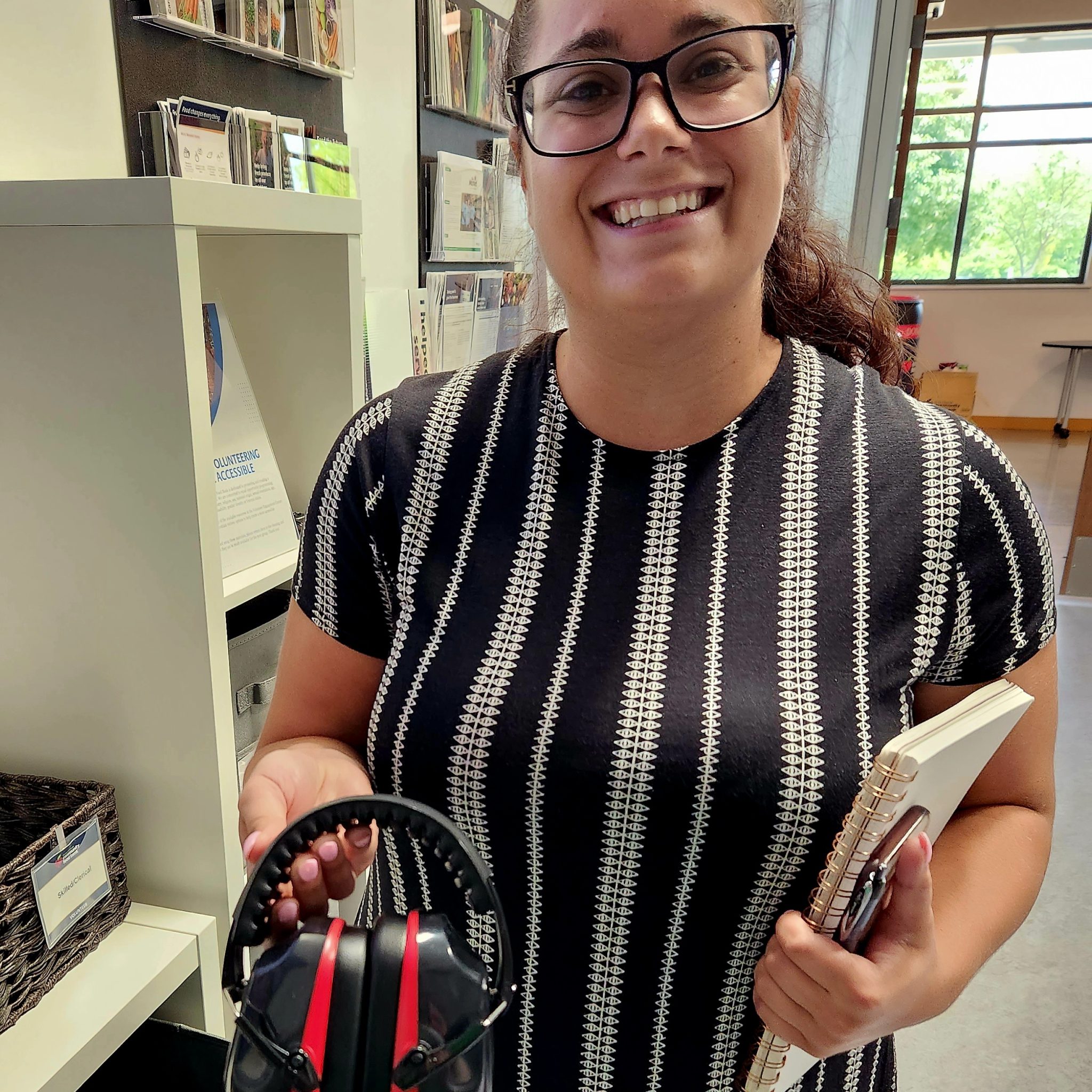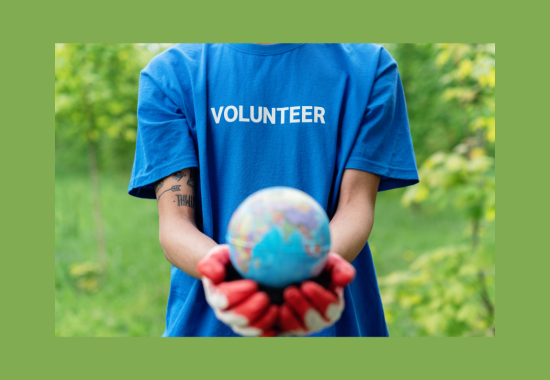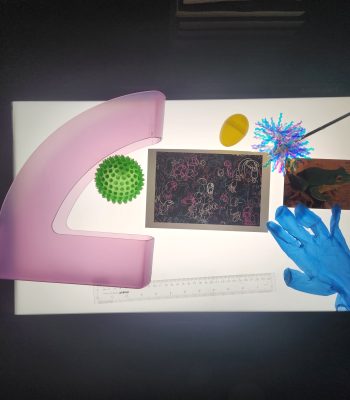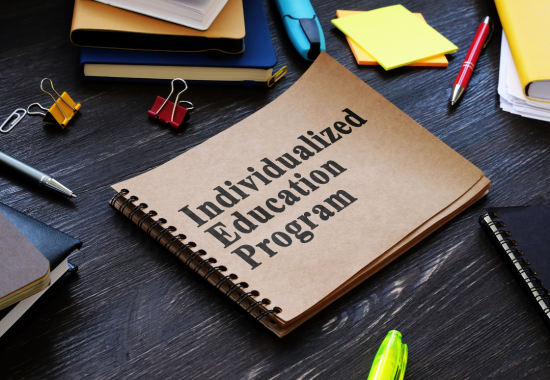Autism Connection has made a couple visits to the Greater Pittsburgh Community Food Bank to talk about hidden differences. Maria Montaro, Corporate and Community Engagement Manager, organized the sessions, and she surprised us with adjustments the organization has made over the past few months. Creating an inclusive, flexible environment has become a force that drives the Food Bank’s mission.
Training and Consultation
Maria recognizes the importance of getting multiple perspectives, and training is one of her top priorities. Autism Connection had the opportunity to include Tanaya Hairston, an Achieva Early Intervention employee who has volunteered for sensory friendly performances at the Pittsburgh Cultural Trust. Her insight as a volunteer working with people on the autism spectrum was invaluable. The group shared experiences, brainstormed solutions, and created a plan of action.

Tanaya Hairston smiling with excitement about sharing her experience
Adjusting the Environment for Inclusive Volunteer Opportunities
After the talk, Maria took time to take Autism Connection on a tour of the facility to show what ideas we shared were implemented. The results are stellar!
- Clear signage and directions upon entering the building
- Adjustable lighting
- Quiet spaces
- Easy access to sensory aids
- Visual cues that provide direction and set expectations
- Magnifying lenses
- Noise canceling headphones
- Comfortable, adjustable seating
- Cushioned floor mats
- Tasks broken down into one or two steps at a time
- Breaks when needed
- Easy access to sensory aids with signage
- Each sensory aid is organized and clearly labeled
- Signs are throughout the building, like this one with visual aids and instructions
- Maria holds a seat mat for additional comfort
- Floor mats add extra comfort and relief for tasks that require standing
- Maria holds a pair of glasses above a bin of visual aids
- Magnifying lenses for tasks that require focus on small print
- Maria holding noise reducing headphones
Understanding Universal Design
A big part of the discussion was about Universal Design. The primary focus for this approach is to create flexible spaces that can be adjusted according to individual needs. What works for one volunteer may not work for another, and sometimes needs of one conflict with the needs of another. The Greater Pittsburgh Community Food Bank recognizes that we can address each person’s needs by making adjustments catered to the individual.
Autism Connection of Pennsylvania thanks Maria and the Greater Pittsburgh Community Food Bank for demonstrating their dedication to creating inclusive spaces that can be adjusted to suit the needs of their volunteers. We can’t wait to see what developments they have in the future.
Find tips for creating similar environments: Autism, Hidden Differences and Volunteering
